The ETH/BTC exchange rate hits a five-year low. Is Ethereum still saved?

Reprinted from panewslab
04/15/2025·8DThis article will sort out the on-chain and exchange data in the past week, and take a look at the panoramic view of token trading.
Written by: Pzai, Foresight News
On April 14, the ETH/BTC exchange rate fell to 0.01924, continuing to hit a new low since January 2020. As a mainstream asset in the last bull market, Ethereum's performance in this cycle has led to many investors complaining about it. Faced with Bitcoin's strong performance in this cycle, Ethereum seems to be experiencing a double test of confidence and value. Some community members also said: "Although OM plummeted 90% today, its performance this year is still better than ETH." In the past week, some giant whales that have been accumulated on the chain are also ready to move. This article will sort out the data on the chain and exchanges in the past week to take a look at the panoramic view of token trading.
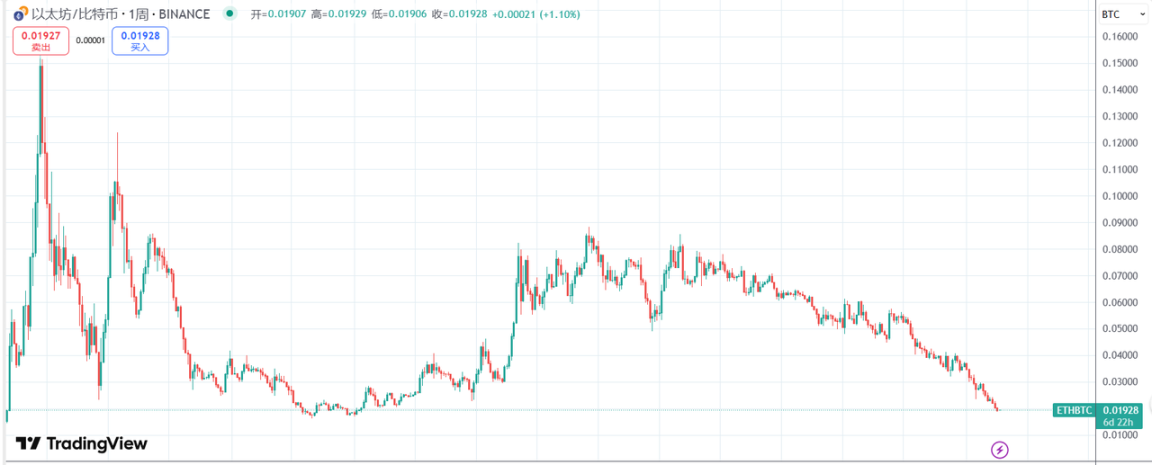
On-chain data: "Retreat" signal appears
In the past week, some giant whales have been "watering" to the market. According to Arkham data, an OG address group that initially purchased 100,000 ETH in 2015 has accumulated 4180 ETH in Kraken, worth about $7.05 million since April. Another 0x62A address sold a total of 4482 ETH at an average price of US$1,572 on April 12, worth US$7.05 million. Such a price decline has triggered a lot of on-chain liquidation. For example, on April 10, a giant whale reduced its position of 35,881 ETH at an average price of US$1,562 and removed its leverage and sold the remaining 2,000 ETH at US$1,575. At present, the address still holds 688 ETH.
Since Bitcoin halving in 2024, Ethereum has fallen 40% relative to Bitcoin, showing a continued weakness in a year after the halving. In comparison, the SOL/ETH exchange rate has risen 49% so far this year to 0.0817. This shows that SOL still performs significantly better than Ethereum in 2025. According to DeFillama data, Ethereum’s on-chain DEX revenue was only US$1.1 million in the past 24 hours, and TVL also fell from a high of US$80 billion to US$46.9 billion, a drop of nearly half. In the last cycle, Ethereum successfully became the second largest asset with its advantages in new assets (such as NFT and DeFi, etc.) and application. However, now, as the MEME trading boom shifts to chains such as Solana, the on-chain circulation of its assets has slowed down relatively.
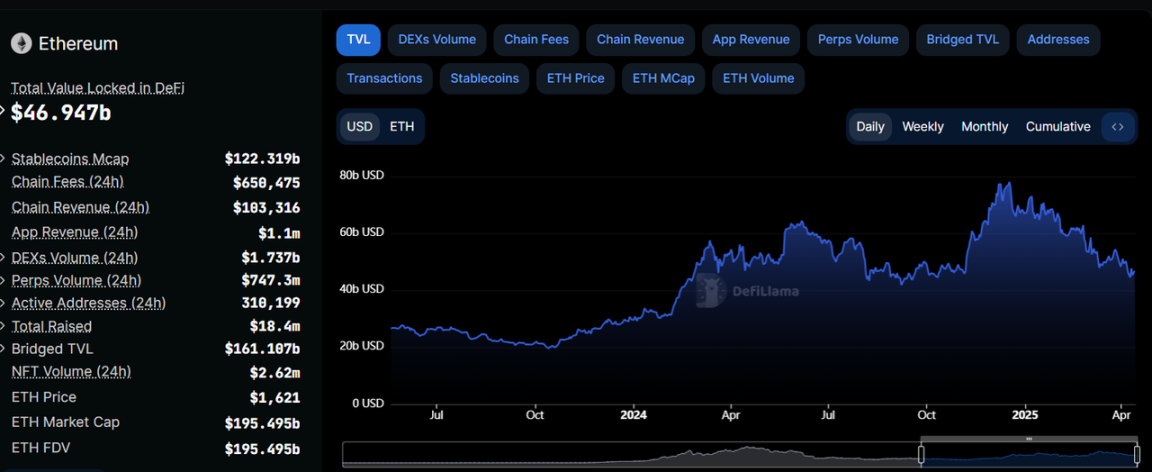
On-chain activity indicators
In the past month, except for the sharp drop in the market on April 7, Ethereum main network Gas has maintained a 2 Gwei level for a long time in the past month, which is reflected in the decline in on-chain activity. In addition, the monthly active addresses of the Ethereum main network have become a volatile trend, with March active addresses below 15 million.

According to The Block data, the average daily trading volume on the Ethereum chain is less than US$3 billion, coupled with the impact of currency price, followed by the monthly income of the main network validator fell below US$200 million in March. From the perspective of investor sentiment, the lower on-chain opportunities have made some investors stand on the wait-and-see attitude towards Ethereum's growth potential in the short term.
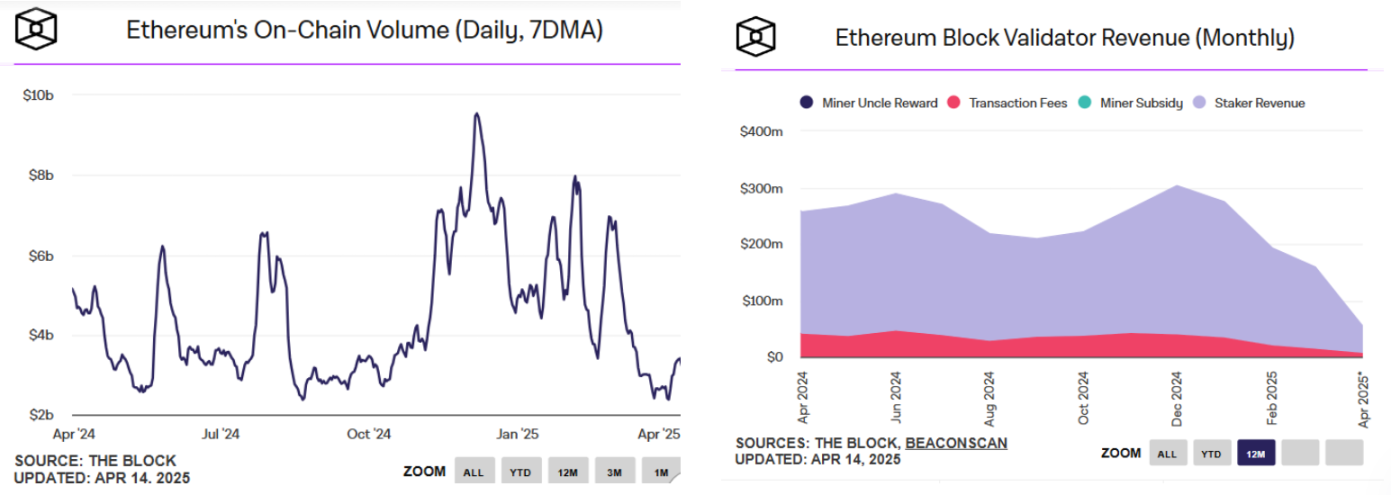
CEX and ETF data
From the exchange data, it can be seen that the peak of Bitcoin in terms of trading volume is significantly larger and the fluctuations are stronger, indicating that more market funds are pouring into Bitcoin spot and derivative transactions. In terms of ETF data, Ethereum spot ETFs have recorded outflows for many days in the past month, with a maximum outflow of US$75 million in a single day. It can be further seen from the differences in market performance that the current risk preferences of crypto assets show significant differentiation characteristics, and the withdrawal of funds from Ethereum spot ETFs has exposed the market's concerns about the slowdown in the crypto ecosystem, especially in the context of intensifying competition in Layer2 and the diverting of developer resources in the new public chain, some institutional investors have chosen to turn.
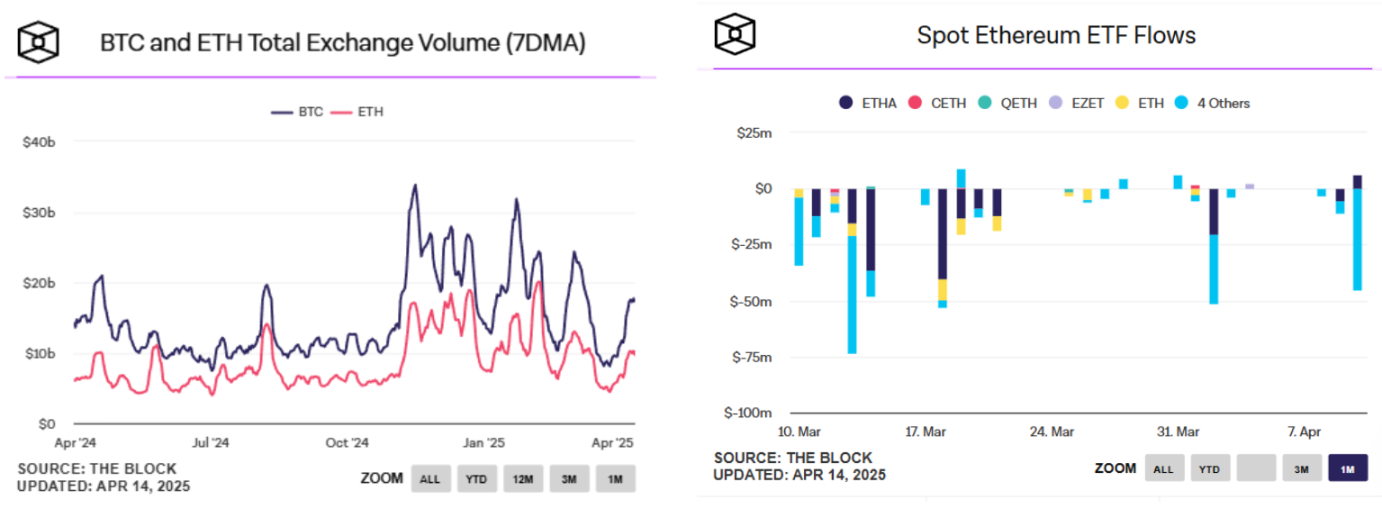
Macro environment: Bitcoin is the leader, Ethereum is waiting for a good
opportunity
In the market environment where Bitcoin is the "Beta" of US stocks, the total market value of Bitcoin is gradually exceeding 60%, and today it even reaches 62.46%, which shows that the "Bitcoin Quarter" characteristics are obvious in the market, with high capital concentration, and the overall performance of altcoins is weaker than Bitcoin. In addition, the crypto fear and greed index is still in the "panic range", which is reflected in investors' preference for "safe-averse" demand, and Bitcoin has become this target. Moreover, in the future strategic reserve plan of the United States, most states propose plans only include Bitcoin in the reference range, which further promotes Bitcoin's position as a mainstream crypto asset. If the ETH/BTC exchange rate falls below 0.018 in Q2 2025, it may trigger more leveraged positions to further suppress the price.
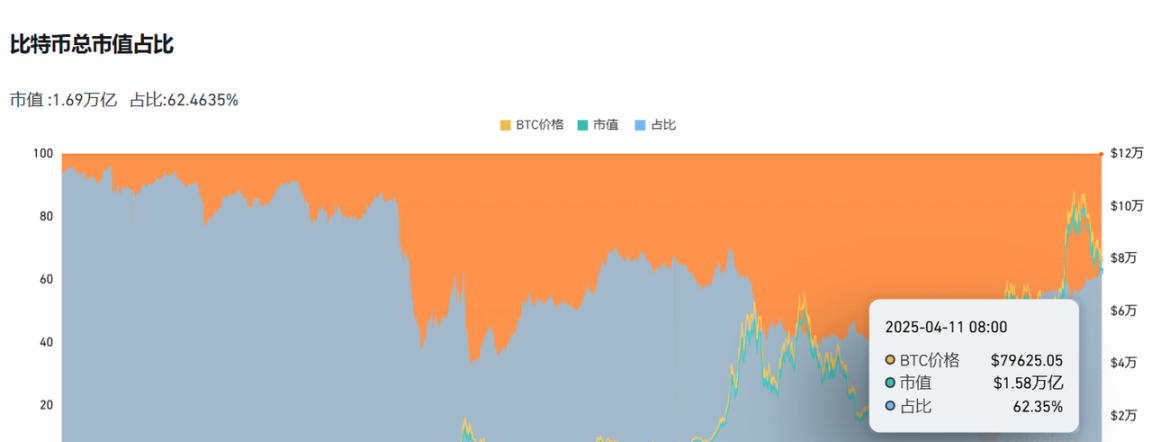
In the Ethereum ecosystem, the potential "Trump liquidity" is also the focus of market attention. On March 25, the Trump family launched the US dollar-pegged stablecoin USD1 through "World Free Finance" (WLFI). The first batch will be issued on the Ethereum and Binance smart chains. As one of the stablecoins dedicated to institutional liquidity, this liquidity window is expected to provide sufficient inflows for Ethereum. The current new lows in ETH/BTC exchange rates are the result of the market's trade-off between short-term risks (half siphon, regulatory uncertainty) and long-term value (ecological innovation, market expectations). With key progress such as Ethereum’s Pectra upgrade and account abstraction, in the future when Vitalik shouts “to build Ethereum L1 as the core of the “world computer””, can we see another revival of Ethereum? Let's wait and see.


 jinse
jinse
 chaincatcher
chaincatcher